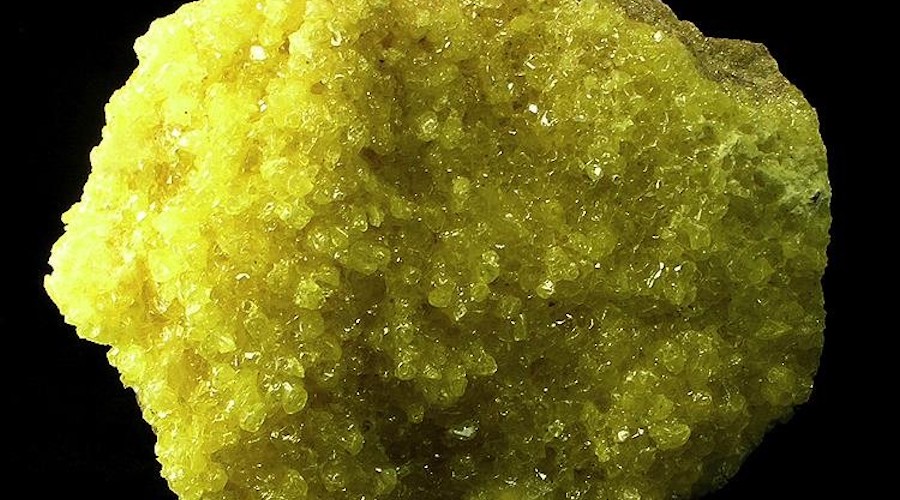Staff Writer | January 9, 2023 |

Sulphur. (Reference image by Robert M. Lavinsky, Wikimedia Commons.)
In a new study, researchers at the US Department of Energy’s Argonne National Laboratory advanced sulphur-based battery research by creating a layer within the battery that adds energy storage capacity while nearly eliminating a traditional problem with sulphur batteries that caused corrosion.

In their paper, the scientists explain that a promising battery design pairs a sulphur-containing cathode with a lithium metal anode. In between those components is the electrolyte, or the substance that allows ions to pass between the two ends of the battery.
Early lithium-sulphur (Li-S) batteries did not perform well because sulphur species (polysulfides) dissolved into the electrolyte, causing its corrosion. This polysulfide shuttling effect negatively impacts battery life and lowers the number of times the battery can be recharged.
To prevent this polysulfide shuttling, prior research focused on placing a redox-inactive interlayer between the cathode and anode. The term “redox-inactive” means the material does not undergo reactions like those in an electrode. But this protective interlayer is heavy and dense, reducing energy storage capacity per unit weight for the battery. It also does not adequately reduce shuttling.
To address this, the Argonne group developed a porous sulphur-containing interlayer. Tests in the laboratory showed initial capacity about three times higher in Li-S cells with this active, as opposed to inactive, interlayer. More impressively, the cells with the active interlayer maintained high capacity over 700 charge-discharge cycles.
“Previous experiments with cells having the redox-inactive layer only suppressed the shuttling, but in doing so, they sacrificed the energy for a given cell weight because the layer added extra weight,” said Guiliang Xu, a chemist and co-author of the study. “By contrast, our redox-active layer adds to energy storage capacity and suppresses the shuttle effect.”
To further understand the redox-active layer, the team conducted experiments at the 17-BM beamline of Argonne’s Advanced Photon Source. The data gathered from exposing cells with this layer to X-ray beams allowed them to ascertain the interlayer’s benefits.
The data confirmed that a redox-active interlayer can reduce shuttling, reduce detrimental reactions within the battery and increase the battery’s capacity to hold more charge and last for more cycles.
“These results demonstrate that a redox-active interlayer could have a huge impact on Li-S battery development,” said Wenqian Xu, a beamline scientist at APS. “We’re one step closer to seeing this technology in our everyday lives.”
Going forward, the team wants to evaluate the growth potential of the redox-active interlayer technology. “We want to try to make it much thinner, much lighter,” Guiliang Xu said.
No comments:
Post a Comment